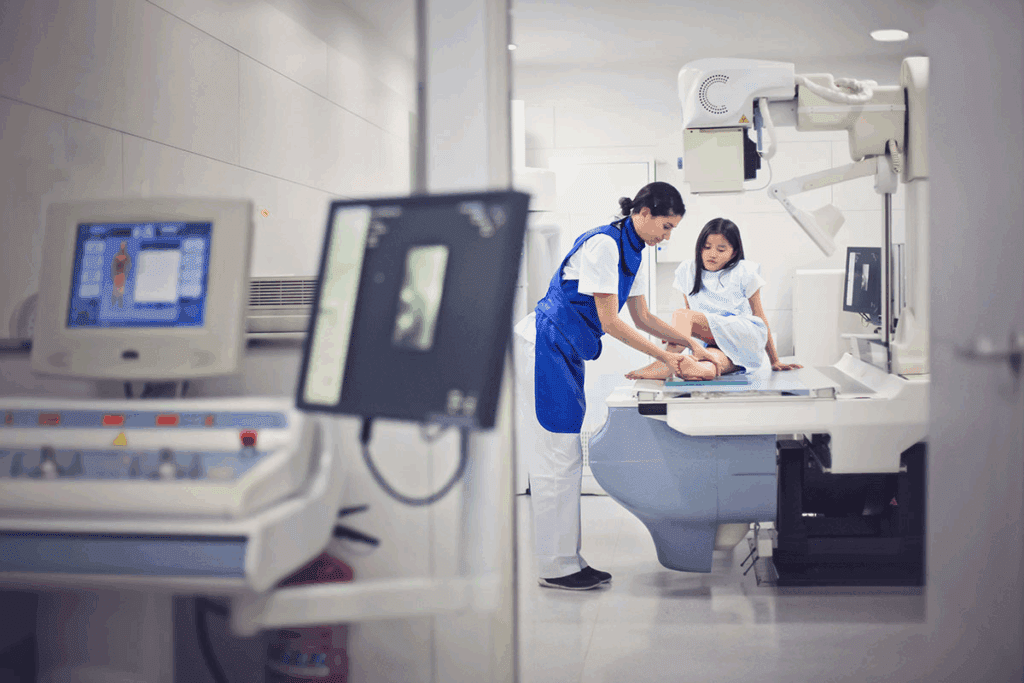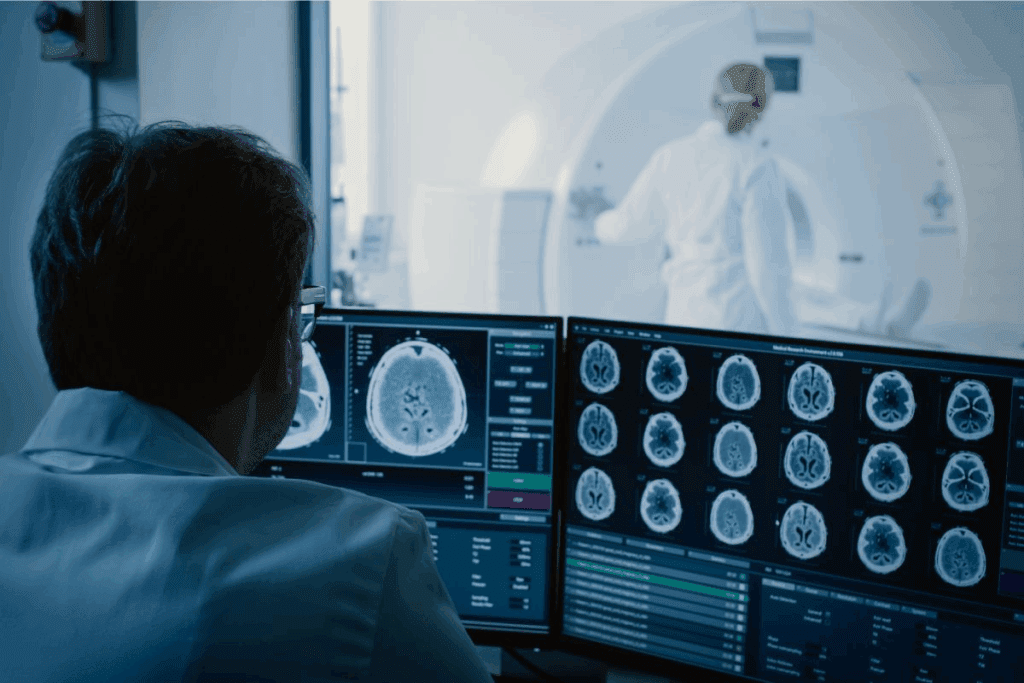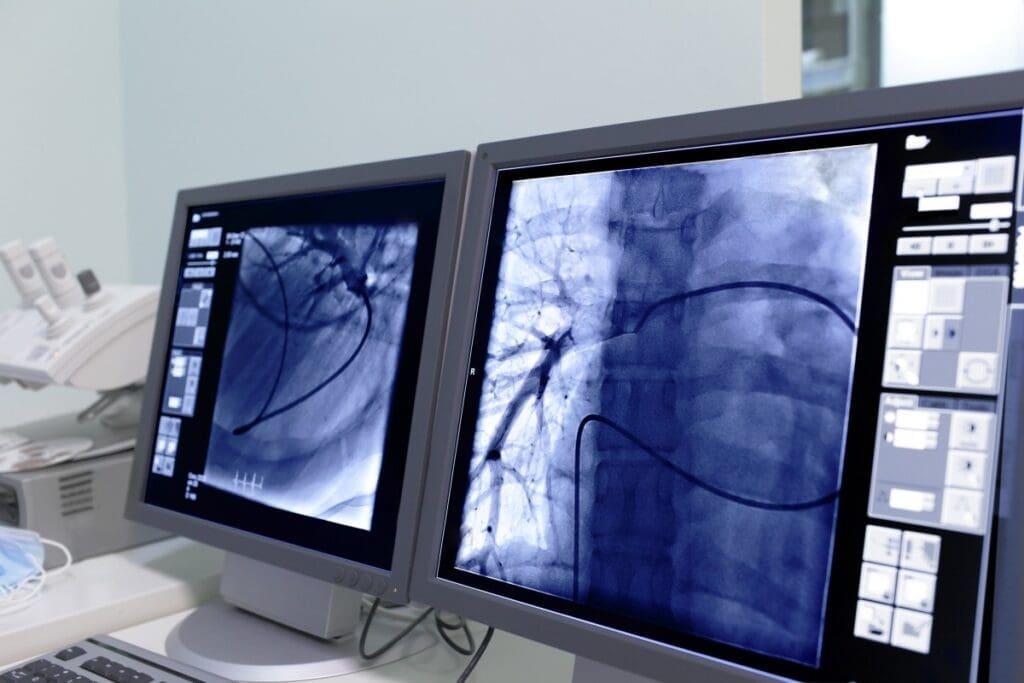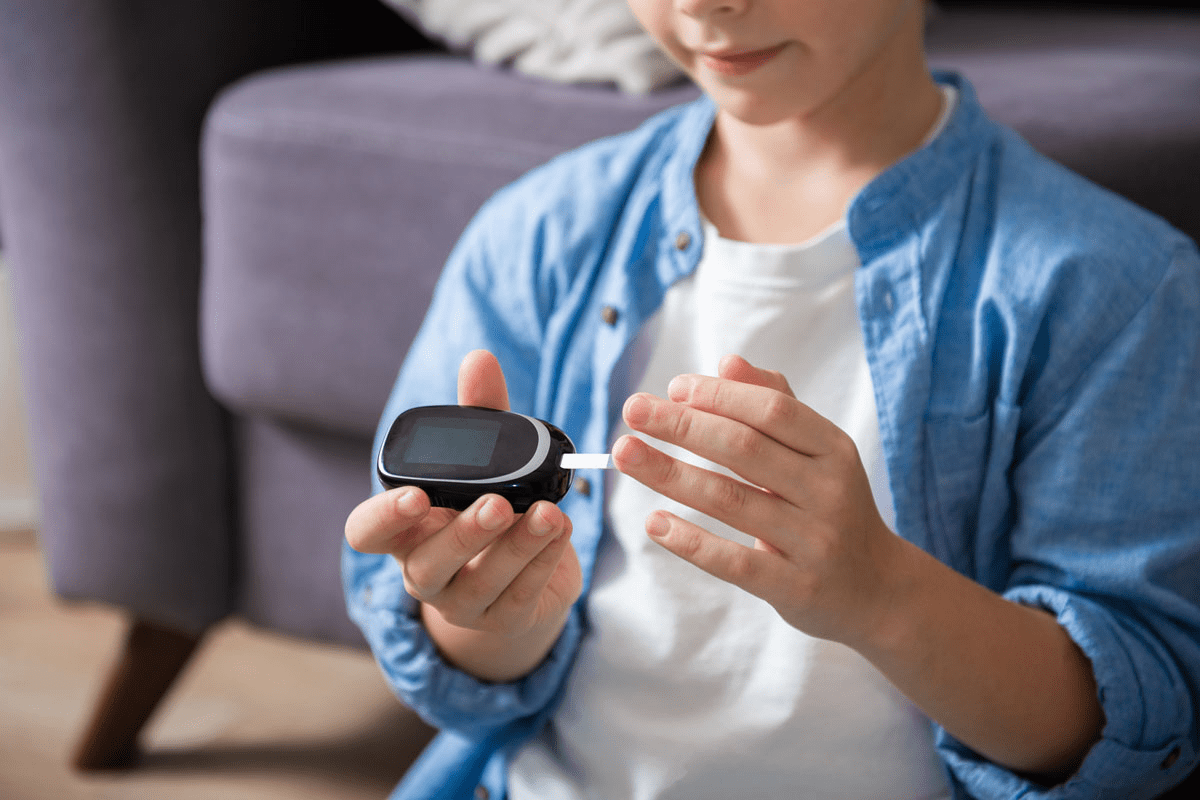Last Updated on November 26, 2025 by Bilal Hasdemir

Getting ready for a medical test can feel overwhelming. But knowing what to expect can make it easier. A CT-guided biopsy is a minimally invasive procedure that uses imaging to get tissue samples for diagnosis. At Liv Hospital, we focus on your comfort and care, making sure every step is done with the latest methods and highest standards.
An IR biopsy is a modern way to get tissue samples. It uses CT guidance to target the right area, lowering risks and improving accuracy.
Key Takeaways
- Understand the steps involved in a CT-guided biopsy procedure.
- Learn how to prepare for an IR biopsy.
- Discover the importance of accurate imaging in diagnosing conditions.
- Find out how Liv Hospital’s expertise ensures a smooth biopsy process.
- Understand the benefits of a minimally invasive biopsy procedure.
Understanding IR Biopsy and Its Medical Significance

IR biopsy uses advanced interventional radiology techniques. It provides precise diagnoses with little invasion. This method has changed how doctors diagnose diseases, allowing for accurate diagnoses without surgery.
Definition and Purpose of Interventional Radiology in Biopsy
Interventional radiology (IR) uses imaging to guide procedures. In biopsies, IR helps precisely target tissues or lesions for accurate sampling. Its main goal is to give a clear diagnosis, which is key for treatment plans.
We use CT scans and other imaging to guide the biopsy needle. This ensures the tissue sample accurately represents the condition being diagnosed.
Benefits of IR Biopsy in Diagnosing Medical Conditions
IR biopsy offers many benefits, making it vital in medical diagnostics.
- Minimally Invasive: IR biopsy is safer and leads to quicker recovery than traditional biopsies.
- High Accuracy: Advanced imaging ensures tissue samples are from the right spot, improving diagnosis.
- Reduced Risk: It avoids open surgery, lowering the risk of infection and other complications.
| Benefits | Description |
| Minimally Invasive | Reduces risk and promotes faster recovery |
| High Accuracy | Enhances diagnostic precision with imaging guidance |
| Reduced Risk | Minimizes infection and surgical complications |
Understanding IR biopsy helps patients and doctors see its value. It’s a key tool in managing and treating many medical conditions.
The Role of CT Guidance in Biopsy Procedures

CT guidance is key in making biopsies more accurate. It uses CT scans to find the right spot for the biopsy needle. This makes the results of the biopsy better.
How CT Scanning Enhances Biopsy Accuracy
CT scans are essential for accurate biopsies. They give detailed images of the body. This helps doctors find the exact spot for the biopsy needle.
Using CT guidance in biopsies has many benefits. It lets doctors watch the needle in real-time and make changes if needed. It also makes sure the tissue samples are taken correctly. Plus, it lowers the chance of harming nearby important parts.
Advantages of CT-Guided Needle Biopsy
CT-guided needle biopsies have many advantages. One big plus is they give clear images of the area to be biopsied. This makes it easier to place the needle exactly right.
| Advantages | Description |
| Precision | CT guidance allows for precise needle placement, improving diagnostic accuracy. |
| Real-time Monitoring | Enables adjustments during the procedure, making it safer and more effective. |
| Reduced Complications | Helps avoid critical structures, lowering the risk of complications. |
CT guidance makes biopsies more accurate and safe. It provides detailed images and real-time guidance. This is why CT scans are so important in biopsy procedures.
Types of Biopsy Procedures
It’s important to know about different biopsy methods for accurate diagnosis and treatment. Biopsy procedures vary based on how tissue is sampled and the guidance used.
Percutaneous Needle Biopsy Techniques
Percutaneous needle biopsy uses a needle to take tissue samples. It’s a minimally invasive method done under local anesthesia. Percutaneous needle biopsy is often used to check for cancers because it’s accurate and has few risks.
Sonography-Guided Biopsy Applications
Sonography-guided biopsy, or ultrasound-guided biopsy, uses ultrasound to guide the needle. It’s great for biopsies near the skin or in hard-to-reach areas. Ultrasound imaging helps place the needle exactly right.
CT-Guided Biopsy Procedures
CT-guided biopsy uses CT scans to guide the needle. It’s best for deep or complex lesions. CT guidance ensures accurate sampling, lowering the chance of errors.
Understanding Your Interventional Radiologist’s Role
When you’re getting a biopsy, knowing your interventional radiologist’s role is key. They are doctors who focus on doing procedures that don’t need big cuts. They use images to guide them.
Training and Expertise of Interventional Radiologists
Interventional radiologists get a lot of training. They go to medical school, do a residency, and sometimes more training in their field. This education helps them do complex tasks like biopsies well.
How the IR Doctor Plans Your Biopsy
Before your biopsy, your doctor will plan it out. They look at your medical history and imaging to figure out the best way to do it. They want to make sure it’s safe and gets the right tissue for diagnosis.
Knowing what your interventional radiologist does can make you feel more ready for your biopsy. We aim to give you the best care. We use the latest methods and technology for the best results.
Medical Considerations Before Your IR Biopsy
To have a successful IR biopsy, patients need to go through specific medical tests. They also need to think about their overall health.
Required Medical Tests Before the Biopsy
Before an IR biopsy, some medical tests are needed. These tests check the patient’s condition and the area for the biopsy. They help the interventional radiologist plan the biopsy.
- Blood tests to check for bleeding disorders or infections
- Imaging tests such as CT scans or MRI to locate the biopsy site
- Other relevant diagnostic tests based on the patient’s medical history
| Test Type | Purpose |
| Blood Tests | To check for bleeding disorders or infections |
| Imaging Tests (CT, MRI) | To locate the biopsy site and assess the target area |
| Diagnostic Tests | To evaluate the patient’s overall health and medical history |
Medication and Health Considerations
It’s also important to look at the patient’s current medications and health. Some medications might need to be changed or stopped before the procedure. This is to lower the risk of complications.
- Blood thinners
- Diabetes medications
- Any other prescription or over-the-counter drugs
It’s very important for patients to follow their doctor’s instructions about medication changes. This ensures a safe and successful procedure.
Preparing for Your IR Biopsy
Getting ready for your IR Biopsy is key to a smooth process. We’ve outlined the steps you need to take.
Preparations One Week Before the Biopsy
One week before your IR Biopsy, there are several things you should do to prepare:
- Review and sign any consent forms provided by your healthcare team.
- Inform your doctor about any medications you’re taking, including supplements and vitamins, as well as any allergies or medical conditions you have.
- Arrange for someone to drive you home after the procedure, as you may be under the influence of sedation.
- Stop taking certain medications as advised by your doctor, such as blood thinners.
Final Preparations 24 Hours Before
24 hours before your IR Biopsy, make sure to:
- Confirm your appointment time and arrival instructions.
- Follow any dietary instructions provided, such as fasting or avoiding certain foods.
- Avoid certain activities or take medications as instructed by your healthcare provider.
- Review the procedure and what to expect on the day of your biopsy.
What to Expect During the CT-Guided Biopsy Procedure
When you arrive for your CT-guided biopsy, our team will guide you through every step. This includes from initial preparation to post-procedure care. We know that going through a medical procedure can be scary. We’re here to make this experience as easy as possible for you.
Arrival and Initial Setup
When you arrive, our medical team will welcome you and take you to the procedure room. You’ll be asked to change into a comfortable gown. Then, our team will help you get settled on the CT scanner table.
The area for the biopsy will be cleaned and prepared. It will also be numbed with a local anesthetic to reduce any discomfort.
The Biopsy Procedure
During the biopsy, a CT scan guides the insertion of a needle into the targeted area. The CT scanner shows real-time images. This lets our interventional radiologist accurately find the area and take tissue samples.
This process is done under local anesthesia. This means you’ll stay comfortable during the procedure.
The IR Biopsy Procedure: A Detailed Walkthrough
Let’s explore the IR Biopsy procedure together. You’ll learn what to expect, which can help reduce your anxiety about medical tests.
Needle Insertion and Navigation Techniques
The IR Biopsy requires a needle to be inserted into a specific area. CT guidance is key, helping the radiologist place the needle accurately. This imaging lets them see the needle’s exact location in real-time.
Local anesthesia is used to make the procedure less painful. The radiologist makes a small cut in the skin. Then, the needle is guided to the right spot using CT images.
Tissue Sampling and Handling
After the needle is in place, tissue samples are taken. The radiologist uses the needle to collect one or more samples. These samples are then carefully handled to keep them intact for lab tests.
The samples are sent to a lab for analysis. There, they’re examined under a microscope to look for any issues. How these samples are handled is very important for getting accurate results.
Potential Risks and Complications
Knowing about the risks of IR biopsy helps patients get ready for the procedure. It also tells them what to expect when they recover. While biopsies are usually safe, they can lead to complications, from small to serious.
Common Minor Complications
After an IR biopsy, some minor issues might happen. These include:
- Mild pain or discomfort at the biopsy site
- Temporary bruising or swelling
- Infection, which is rare but can be managed with antibiotics
Most minor issues can be handled with the right care after the procedure.
Serious Complications and Their Management
Though rare, serious problems can occur. These might be:
- Significant bleeding or hemorrhage
- Damage to surrounding tissues or organs
It’s important for patients to follow the post-procedure instructions closely. This helps lower the risk of serious issues.
| Complication | Risk Factor | Management |
| Significant Bleeding | Coagulopathy, anticoagulant use | Stop anticoagulants, apply pressure, possible transfusion |
| Infection | Poor wound care, immunosuppression | Antibiotics, wound care |
| Organ Damage | Anatomical variation, inexperience | Immediate intervention, possibly surgery |
Immediate Post-Procedure Care and Recovery
After a CT-guided IR biopsy, it’s key to follow a careful care plan for a smooth recovery. We know the post-procedure phase is as important as the biopsy itself. We’re here to help you through it.
Monitoring After the Biopsy
Our medical team will watch you closely after the biopsy to check for any immediate issues. This is vital to make sure you’re recovering well and to address any concerns. You might feel some discomfort or pain at the biopsy site, which can be managed with medication.
- Keep the biopsy site clean and dry to prevent infection.
- Watch for signs of infection, like redness, swelling, or more pain.
- Follow any specific wound care instructions from your healthcare team.
Pain Management Strategies
Effective pain management is a big part of post-biopsy care. We suggest you stick to the pain management plan given by your healthcare team. This might include:
- Using pain relief medications as directed to manage discomfort.
- Avoiding strenuous activities that may make pain worse.
- Applying ice packs to the biopsy site to reduce swelling and ease pain.
If you have severe pain, increasing redness, or swelling at the biopsy site, tell your healthcare provider. These could be signs of complications.
By following these guidelines and staying in touch with your healthcare team, you can ensure a smooth and safe recovery after your IR biopsy.
Aftercare and Follow-Up
The time after a CT-guided IR biopsy is key. Proper care can greatly affect your healing. It’s vital to follow your healthcare team’s advice for a smooth recovery.
Managing Biopsy Site Care
Looking after the biopsy site is very important. Keep it clean and dry to avoid infection and help it heal. You might need to cover it with a bandage or dressing. Watch for signs of infection like redness, swelling, or discharge.
If you notice anything odd or if the site isn’t healing right, call your doctor right away. They can give more advice or change your care plan if needed.
Follow-Up Appointments
Follow-up visits are a big part of aftercare. They let your healthcare team check on your healing and biopsy results. Make sure to go to these appointments as planned to catch any problems early.
At these visits, your doctor might give more specific advice based on your situation and biopsy findings. Don’t hesitate to ask questions about your recovery or the biopsy results.
By following aftercare tips and going to follow-up visits, you can ensure a good recovery. You’ll also get the info you need about your health.
Conclusion – Ensuring a Smooth IR Biopsy Experience
Being informed and prepared is key for a smooth IR biopsy. Knowing the procedure and the role of CT guidance helps. It also shows the expertise of interventional radiologists.
A smooth recovery starts with a well-planned biopsy. Our team of experts works closely with patients. They ensure patients get the best care from start to finish.
By following the guidelines in this article, patients can avoid risks. This ensures a successful IR biopsy experience. We are dedicated to delivering top-notch healthcare and support for international patients.
FAQ
What is an IR biopsy?
An IR biopsy, or interventional radiology biopsy, is a small procedure. It helps diagnose health issues by taking tissue samples. These samples are often guided by CT scans.
How does CT guidance improve biopsy accuracy?
CT guidance makes biopsies more accurate. It shows real-time images of the area to be biopsied. This allows for precise needle placement, reducing errors and complications.
What are the benefits of percutaneous needle biopsy?
Percutaneous needle biopsy is less invasive. It leads to quicker recovery, less scarring, and often less pain. This is compared to traditional surgical biopsies.
What is the role of an interventional radiologist in a biopsy?
An interventional radiologist is a specialist. They are trained to perform image-guided procedures, like biopsies. They ensure the procedure is accurate and safe.
What medical tests are required before an IR biopsy?
Before an IR biopsy, patients get blood tests. These tests check overall health and for bleeding disorders. Imaging tests may also be done to plan the procedure.
How should I prepare for an IR biopsy?
To prepare for an IR biopsy, stop certain medications. You may need to fast for a while. Also, arrange for someone to drive you home after the procedure.
What happens during a CT-guided biopsy procedure?
During a CT-guided biopsy, you lie on a CT table. The radiologist uses CT images to guide the needle. They collect a tissue sample and then remove the needle.
What are the possible risks and complications of IR biopsy?
Risks include bleeding, infection, and nerve damage. But these are rare. Most biopsies are done without major issues.
How do I manage pain after an IR biopsy?
Pain after an IR biopsy can be managed. You might use over-the-counter pain meds or prescription ones. Your doctor will tell you the best option.
What is the aftercare following an IR biopsy?
Aftercare includes watching the biopsy site for infection or bleeding. You should manage your pain and follow up with your doctor as scheduled.
When will I receive the results of my biopsy?
The time to get biopsy results varies. It depends on the lab and the analysis. Your doctor will let you know when to expect the results.
Can I undergo an IR biopsy if I have a pacemaker or other implants?
If you have a pacemaker or implants, tell your doctor before the biopsy. They may need to take special precautions or use a different procedure.
References
Bicket, M. C., et al. (2013). Epidural injections for spinal pain: A systematic review and meta-analysis. Pain Physician, 16(5), E453-E470. https://pubmed.ncbi.nlm.nih.gov/24195874/






